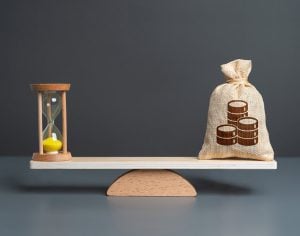How do you go about merchandising a product like Marmite when half the population absolutely loathe it? If anyone was up to the task it was Alastair Whiteley, creative director of Hornall Anderson, branding consultancy. He is the man behind the phenomenally successful Marmite egg cups, toast racks, cycling tops and tea towels. He even won acclaim from the New York Times for his limited edition Marmite jar during the Queen’s jubilee. When everyone else was just slapping union jacks on everything, Whiteley simply changed the spelling on the jar to Ma’amite. “People aren’t opening those jars, it’s a collectors’ jar displayed proudly in their homes,” he explains.
Likewise with merchandise, you can’t just logo slap – there needs to be a little more thought put into it. “It’s not an easy thing to do so it’s understandable that some people just put their logo on a golf ball or an oversized t-shirt; it’s alright but it’s first thought stuff,” says Whiteley. “If you can get a wry smile or a relevant connection with somebody, that’s the kind of relationship that just lasts.”
Most brands are one dimensional and merchandising is a really nice way to create content around that. The key thing with Marmite, for example, is to find different ways to keep the people that love it engaged. “You also have to project yourself forward ten or twenty years because everything you do from day zero makes a difference,” explains Whiteley.
So whether you’re a coffee shop in Shoreditch or a tech company in Hull, there are so many touch points where merchandising can leave a little impression. “It’s the attention to detail; whether it’s the spoon, the cup or the pot of sugar, you’ll end up with with brand fans that aren’t just customers or consumers,” says Whiteley. With merchandising, there is a real opportunity for people to start to love these things. “Marmite is now the consumers’ brand as much as it is Unilever’s.”
But how does a company build that loyalty? Step one is understanding your customer, which takes more than just common sense. “You’ve really got to know your customers and that comes down to listening,” says Whiteley. As a designer, he has the unique skill of being able to see through other people’s eyes and see things the way they do. “We’re strange people watchers,” he laughs. For most people with a great business idea, this intuition doesn’t come naturally so they have to go that extra mile to observe what their customers buy, pay attention to how they behave and try to tease out some little personal traits.
Once you know what your customers want, the process of merchandising becomes a whole lot easier. “Your customers may be the kind of people who like irreverent, charming wit or they could be people who like something a bit more discerning,” says Whiteley. “When you’ve worked that out you can then go about finding something that fits the brand.”
Brands are like people in that they need to have a personality and that has to be reflected in merchandise, which means cheap frills will get you nowhere. Likewise, if people feel they’re being sold to you’re likely to fail, says Whiteley. “Consumers today are way more brand savvy and cynical than ever before; they want a brand they can believe in and trust and, if you can do something that’s a little more out there, you’ll be rewarded.”
Luckily for SMEs and start-ups, being out there comes a lot easier than it does with larger companies. “The bigger players are already set in motion and are all about the quick return, whereas a new upstart can invest smaller amounts for bigger yields,” says Whiteley. The fact it, smaller companies have greater potential for creative ideas.
“Now that Coca-Cola is in full control of Innocent, the merchandising has become much more homogenised, which is a real shame because Innocent used to have a real wit and charm; small companies shouldn’t forget this,” says Whiteley. “It’s about keeping relevance and that’s really tricky in a fast-paced marketplace.”
One sip at a time
Sandows London
Sandows is an independent cold brew coffee producer which serves its product on tap at its bar in London and provides it bottled to Selfridges, Whole Foods and other outlets. “With merchandising, we try to take a long-term view that isn’t about quick gain, but about building a brand with prestige and that takes time,” says Hugh Duffie, company co-director. Sandows has tried and tested a few merchandising options and has settled on a select set it know its customers will appreciate. “You really want people to go, ‘wow, that’s amazing’ and recognise that it’s really good quality; we’re not afraid to go for the premium end.
Finding the right people to work with is essential and after shopping around Duffie settled on ICON Printing to help create Sandows’ range of merchandise. “ICON were one of the only places where you could get a direct quote online; I just couldn’t be bothered with the hassle of waiting for an email back,” says Duffie. “They didn’t just take our money: they actually had input.”
Sandows gives away some merchandise for free, but as for its stylish tote bags, for example, it charges. “We’d much rather for them to have paid for it and to be wearing it proudly. I think that’s so much more effective.” And as merchandising can be quite expensive, building a merchandise range up gradually is usually a good option for a smaller company. ![]()
Share via:








































